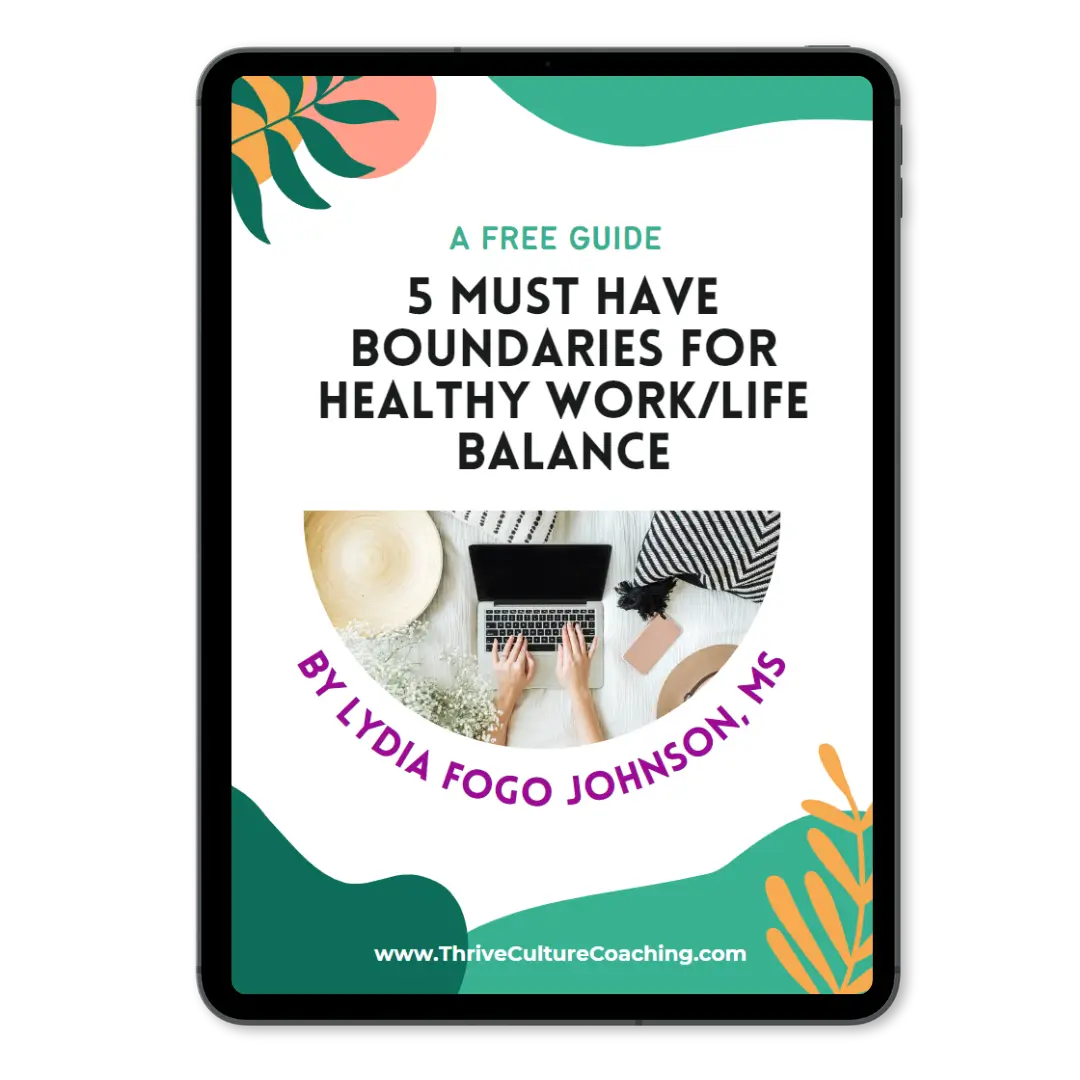Table of Contents
- When Work Feels Like It’s Killing You (and You’re an HSP)
- HSP Superpowers and HSP Burnout Factors (the DOES Model)
- Check-In: Which HSP Traits are your Superpowers vs. Risk Factors?
- The Three-Part Framework for HSP Burnout Recovery
- Real Clients, Real Results: What Happens When HSPs Get the Right Support
- Why Working with an HSP-Aware Coach Can Change Everything
When Work Feels Like It’s Killing You (and You’re an HSP)
I’d always known I was a little different. I hated scary movies. I cried easily, even at commercials. I could sense tension in a room before anyone said a word. Bright lights, loud noises, and big emotions all felt like a lot, but I figured everyone was dealing with the same stuff. I just assumed I wasn’t handling it as well.
Then I had my son—and everything broke.
Suddenly, I was juggling new motherhood (including the world-altering journey of matrescence) and running a business, constantly overstimulated, emotionally raw, and desperate for quiet. I still remember sitting on the floor, wearing industrial-grade earmuffs, blasting classical music just to survive the 1,000th hour of his wailing. I felt beyond tired. I felt like I was unraveling.

That moment sent me searching for answers, and I stumbled across Dr. Elaine Aron’s research on Highly Sensitive People. I took her self-assessment and scored 27 out of 27. For the first time, I had language for why the world had always felt a little too loud, too fast, too much. I wasn’t broken. I was a highly sensitive person, AKA, an HSP!
If you’re here googling something like “highly sensitive person work is killing you,” you might be discovering this, too. Whether you’re new to the term or have long suspected it applies to you, this survival guide is for you. We’ll unpack why work feels so overwhelming for HSPs, how your sensitivity is actually your superpower, and the concrete steps you can take to make your job feel more sustainable—without blowing up your career.
HSP Superpowers and HSP Burnout Factors (the DOES Model)
If you’re a Highly Sensitive Person (HSP), your nervous system is wired to take in more—more information, more emotion, more nuance. That’s not just personality. It’s biology.
If you feel like you’re the only HSP in the world, rest assured that you’re in good company. Roughly 20% of the population—both human and some animal species—are what psychologist Dr. Elaine Aron defines as Highly Sensitive People. This isn’t a personality quirk or emotional weakness. It’s a biologically based trait, backed by decades of research. Your nervous system is literally designed to pick up more stimuli and process it more deeply.
That sensitivity can feel like both a gift and a curse in the workplace. And if you happen to be in a leadership role—managing a team, directing strategy, holding emotional space for others—the emotional load may be even heavier. The system wasn’t built for your sensitivity, but the world desperately needs the kind of thoughtful, attuned leadership you bring.
Dr. Aron uses the acronym DOES to explain how HSPs experience the world:
- D — Depth of Processing
- O — Overstimulation
- E — Emotional Reactivity and Empathy
- S — Sensitivity to Subtleties
These aren’t flaws. In fact, they’re often the very traits that make you exceptional at what you do. But when your environment is relentless, when your bandwidth is maxed out by caregiving, deadlines, and an “always on” culture, these same traits can push you toward burnout faster than others.
Let’s break down each DOES trait—and how it can become both a superpower and a stress trigger at work:
D: Depth of Processing
HSPs don’t just do—they analyze. Your brain naturally reflects, evaluates, and connects dots. This makes you excellent at problem-solving, long-term thinking, and seeing consequences before they arise.
In leadership, this trait can make you a visionary—someone who builds systems, strategies, and solutions that others overlook. But it also means you may struggle to turn your brain off. You replay conversations, overthink decisions, and get stuck in analysis loops that leave you mentally drained.
O: Overstimulation

HSPs reach sensory and emotional thresholds more quickly. Bright lights, crowded offices, back-to-back meetings, Slack pings—it all piles on fast.
And if you’re a leader? Add in rapid-fire decision-making, holding space for others, and never having a moment to yourself. Even internal overstimulation (thought loops, emotional tension, inner pressure) can send you into cognitive overload.
E: Emotional Reactivity and Empathy
You feel deeply. You pick up on others’ emotions. You care. That makes you the friend who checks in and the leader people trust. Your empathy is likely one of your most impactful traits.
But it also makes you more vulnerable to emotional burnout. HSPs often absorb feelings that don’t belong to them. They feel responsible for fixing things they didn’t cause. If you’ve ever left a meeting feeling more drained than the person who vented to you, this might be why.
S: Sensitivity to Subtleties
You notice shifts in tone, energy, and dynamics that others completely miss. You can walk into a room and instantly tell something is off. You can read the political climate of your company without anyone spelling it out.
In leadership, this gives you an edge—you can sense what your team needs, navigate office politics, and spot risks before they escalate. But this super-sensitivity also means your nervous system is processing all the time. That kind of constant intake can leave you exhausted even when nothing dramatic has happened.
If you’ve ever thought, “Why is this job so hard for me when other people seem fine?”—this is why. You’re not imagining it. You’re not “too much.” You’re just wired for depth in a world that rewards speed and surface.
The good news? With the right adjustments, boundaries, and strategies, your sensitivity doesn’t have to hold you back—it can be the key to building a work life that’s both sustainable and fulfilling.
Check-In: Which HSP Traits are your Superpowers vs. Risk Factors?
Now that you understand the core HSP traits—Depth of Processing, Overstimulation, Emotional Reactivity and Empathy, and Sensitivity to Subtleties—it’s time to pause and reflect. Burnout builds slowly, and it often centers around one or two traits that are especially taxed by your current environment.
Some HSPs spiral into overthinking and mental fatigue. Others feel emotionally drained after every meeting. Some are physically overstimulated all day by noise, interruptions, or unspoken tension. And for leaders, it’s often a perfect storm of all the above.
Ask yourself:
- Which DOES trait feels most depleted right now?
- Where am I spending the most energy—mentally, emotionally, physically?
- Which traits feel like strengths I’m using well?
- Which ones are tipping me into burnout?
You don’t have to fix everything. Sometimes, simply naming what’s happening is the first powerful step.
The Three-Part Framework for HSP Burnout Recovery
Whether you’re a highly sensitive leader managing a team or an HSP navigating the emotional chaos of a demanding work culture, healing from burnout doesn’t happen with one magical fix. It requires a layered, proactive approach.
That’s why I use a three-part, evidence-based burnout recovery model designed specifically for Highly Sensitive People. It’s holistic, flexible, and powerful—because it addresses both external demands (like a noisy office or emotional labor) and internal stressors (like overthinking or perfectionism). It works whether you’re burned out from your job, your home life, or both.
This model can be applied across any of the DOES traits—depth of processing, overstimulation, emotional reactivity, or sensitivity to subtleties. The examples below highlight how to use it for just one or two traits at a time, but the framework itself is adaptable to whatever part of your nervous system is feeling most taxed.
1. Prevention
Prevention means reducing the input that’s overwhelming your system in the first place. Think of it as building a buffer between your sensitivity and the stressors that trigger it.
If overstimulation is your core issue, prevention might include:
- Wearing earplugs or noise-cancelling headphones in the office
- Requesting a more private or flexible workspace
- Scheduling “quiet hours” where you’re unavailable for meetings or messages
If emotional overload is the bigger challenge, it could look like:
- Practicing emotional hygiene through journaling, movement, or rituals to reset after hard interactions
- Setting stronger interpersonal boundaries (yes, even with “nice” coworkers)
- Releasing the tendency to over-function or fix things that aren’t yours to fix
📌 Leader insight: Prevention isn’t just about managing your to-do list. It’s about designing a work style that supports your nervous system. That may include protecting time for deep thinking, choosing where you show up emotionally, and being ruthless about what gets your energy.
2. Buffering & Resourcing
Once you’ve reduced what’s draining you, the next step is to strengthen your internal and external support systems. This is where you stop surviving and start restoring your capacity to handle life as an HSP.
Buffering means putting cushions between you and stress before it hits. Resourcing means increasing what fills your cup—emotionally, mentally, physically. These strategies help you stay grounded even when challenges arise.
You might buffer your sensitivity to subtleties by:
- Avoiding office gossip or energy-draining conversations
- Preparing scripts or coping plans for emotionally complex meetings
- Creating predictability wherever you can (HSPs thrive on it)
Or you might resource your depth of processing by:
- Using structured tools (like thought-organizing worksheets) to externalize mental clutter
- Talking through your ideas with someone who listens without rushing you
- Giving yourself permission to take the time you need to think clearly
📌 Leader insight: One of the best resources you can give yourself is aligned connection. Whether it’s a mentor, a therapist, or a coach who understands HSP challenges, having space to process with someone trained in your wiring can be a game changer. You don’t have to carry it all alone—or figure it all out in isolation.
3. Recovery & Restoration
Even with strong prevention and buffering strategies, highly sensitive persons still need intentional time to recover. Your system is doing more work—emotionally, cognitively, and physically—than most people recognize. That’s not weakness. It’s capacity management.
Recovery means actively clearing stress that’s already built up. Restoration means returning your system to a regulated, grounded state. Together, they ensure you don’t just keep functioning—you feel whole again.
This is especially critical for HSPs who lead, parent, or care for others. If your days are filled with decisions, tension, or emotional weight, then your recovery must be just as substantial as your output.

You might restore your system by:
- Taking short decompression breaks after meetings or emotional conversations
- Scheduling quiet, tech-free evenings to reset your senses
- Creating a post-work ritual to separate your identity from your performance
And you might recover from emotional overload by:
- Crying, moving, or writing—anything that lets your body release what it’s been holding
- Getting extra sleep without guilt (yes, you probably need more than others)
- Being around people who energize you without needing anything from you
📌 Leader insight: Imagine your nervous system like a pregnant body—constantly doing invisible work behind the scenes. You wouldn’t tell a pregnant person to “push through” or “just drink more coffee.” You’d tell them to rest. You deserve that same grace. After all, your mind and body are working overtime, too!
Real Clients, Real Results: What Happens When HSPs Get the Right Support
You don’t have to overhaul your career overnight—but small, intentional changes do add up. Here’s how three of my clients used the HSP burnout recovery framework to transform their work lives:
Angela: Overstimulated and Interrupted
Angela came to me feeling constantly distracted and overstimulated at work. She loved her job—but the loud coworker next door and constant interruptions were wearing her down. Together, we created a plan rooted in prevention and buffering: she began using high-fidelity earplugs, posted clear “focus hours” on her calendar, and made her physical environment more HSP-friendly. Within weeks, her stress levels dropped—and her productivity increased.
Heidi: Stuck in the Overthinking Loop
Heidi was paralyzed trying to choose her next career move. Her depth of processing (and perfectionism) made every option feel overwhelming. We worked on buffering and resourcing by using thought-organizing worksheets that helped her get the swirl of ideas out of her head and into a clear strategy. With that clarity, she confidently pivoted into a role that honors her sensitivity and values.
Jamie: Emotionally Drained by a Toxic Culture
Jamie was dealing with constant emotional overload from a toxic work environment and demanding coworkers. She felt like she was carrying everyone else’s stress while getting no support herself. We focused on emotional recovery and prevention: she established clear emotional boundaries, resourced herself through deep, nourishing friendships, and created a weekly ritual of walking in nature to decompress and restore. With time, her capacity returned—and so did her sense of self.
Pst- You can read more success stories here.
📌 If you see yourself in Angela, Heidi, or Jamie, you’re not alone. These aren’t rare cases—they’re typical of what happens when a Highly Sensitive Person gets the right kind of support.
Why Working with an HSP-Aware Coach Can Change Everything
If you’ve ever felt like your job is “killing you” while everyone around you seems to cope just fine, you’re not broken—and you’re definitely not alone. You may simply be a Highly Sensitive Person living and working in a system that doesn’t understand or support your needs.
Working with a highly sensitive person coach can help you finally understand why certain things feel harder for you—and what to do about it. You don’t need to toughen up or push through. You need a support plan that’s rooted in your biology, your strengths, and your lived reality.
That’s exactly why I created She Leads Well—my signature burnout recovery program for high-achieving, heart-centered women in leadership roles. It’s built for HSPs and emotionally attuned professionals who want to lead with impact without abandoning themselves in the process.
Inside the program, we’ll work together to:
- Understand exactly what YOU need to thrive in your career as an HSP
- Build a sustainable strategy to manage highly sensitive person burnout
- Redesign your leadership style to work with your wiring—not against it
- Create emotional boundaries, routines, and rituals that protect your energy and reignite your confidence
📌 This isn’t about performance hacks or hustle culture. It’s about finally feeling whole, resourced, and grounded at work—and leading from a place of strength, not survival.
Book a free consultation call to explore if She Leads Well is the next right step in your healing. You don’t have to keep doing it all alone. And you don’t have to keep pretending you’re fine.
✨ You’re sensitive—and you’re built to lead.




Share